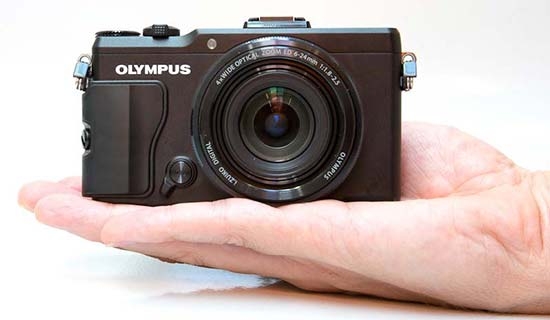<p>The Olympus XZ-2 presents itself as a high-end digicam that succeeds the XZ-1 in function and form. Some of the major features it touts are the Truepiv IV processing chip, which allows for fast and accurate autofocus. A high resolution touchscreen LCD would suggest a move forward in usability, and a hybrid control ring on the lens that grants easy access to a plethora of features shows Olympus was indeed concerned with making the camera easy to use. First sight shows a 12MP sensor behind a 28-112mm f/1.8-2.5 lens.</p>
<h2>General Usability</h2>
<p>Here, it is necessary to start with the bad, because it will be what you experience when you turn the XZ-2 on for the first time. Menu navigation is unintuitive and does not give the impression of a continuous experience, in spite of efforts by Olympus to achieve the opposite with their touch screen and hotkeys. Many options take effort and intention to find. Those who enjoy exploring will eventually find their way around the interface, but ought not to rely on the manual, which at times will feel like a scribbled map. Once you know where everything is, however, using the camera is relatively easy. The screen will tilt up and down, perfect for shots where the camera needs to be held over or under your head. The camera lacks a viewfinder, however, leaving this LCD as your only way of seeing a shot unless you attach an external viewfinder to the hot shoe. The camera can be sluggish to start, but is generally snappy during operation.</p>
<h2>Performance</h2>
<p>The XZ-2 is equipped with a large sensor for its price, which gives it an innate advantage in image quality. Image noise starts to become noticeable around ISO 1600, but it will still produce acceptable quality a setting or two higher. Zooming through the lens&#8217; focal range occurs in 30 intermediate steps, so while not continuous, this still allows good control over the focus. Autofocus performance will exceed expectations, taking photos that are clear down to a 1&#8221; square. The camera takes about a quarter of a second to cycle through the full autofocus range, so rest assured that clear, quick shots are possible. Additionally, the AF unit can focus on a subject as it moves through a frame, and does so with tact. Video mode is about what you would expect from a $600 digicam, managing smooth 1080p and 720p relatively well. Smaller video file sizes, though, have no place as these are the only two available resolutions. Endurance isn&#8217;t a bragging right of this camera, but a modest 350 stills per battery charge can still be expected.<br />
In all, the Olympus XZ-2 is a solid camera that dresses to impress but fails to fully deliver on some fronts. It is in no respect a substandard device, in fact, image quality is impressive, and autofocus handles surprisingly well. However, there are enough rough edges to make it a pain to use at times. These are faults that are mostly forgivable though, as precise manual control will really allow the camera to open up as a well-rounded and more than worthwhile photography unit.<br />
Bill Green is an engineering student and freelancer for Photo.net where you will find hundreds of camera and lens reviews by professional photographers.</p>

Olympus XZ-2 Overview
